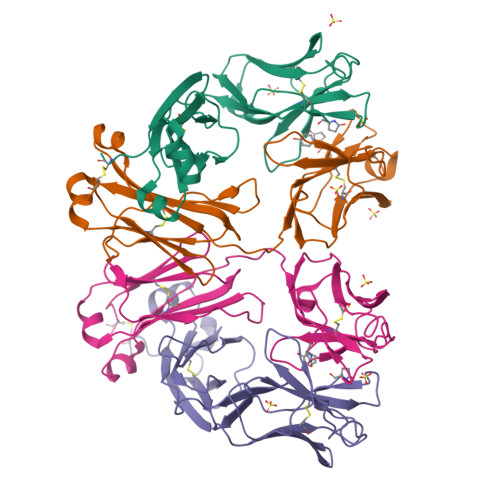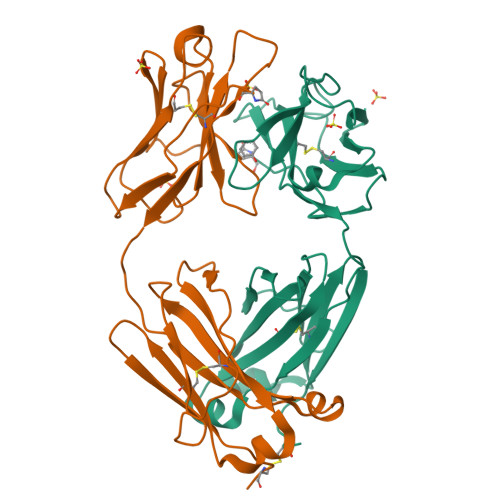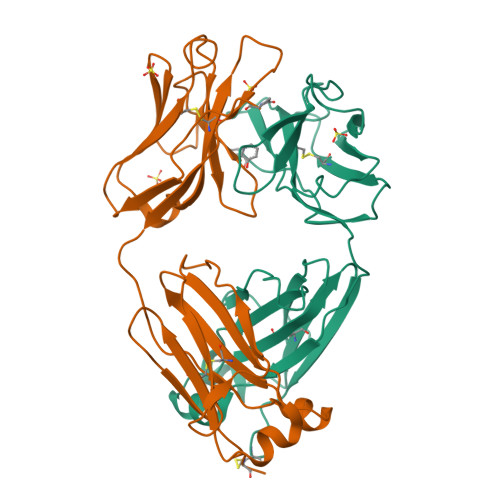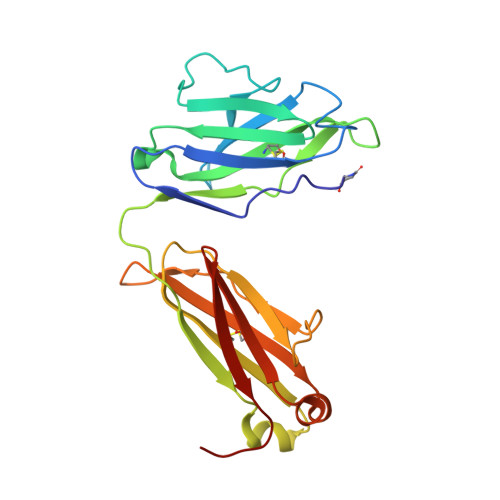Bence Jones KWR protein structures determined by X-ray crystallography.
Makino, D.L., Henschen-Edman, A.H., Larson, S.B., McPherson, A.(2007) Acta Crystallogr D Biol Crystallogr 63: 780-792
- PubMed: 17582169
- DOI: https://doi.org/10.1107/S0907444907021981
- Primary Citation of Related Structures:
2OLD, 2OMB, 2OMN - PubMed Abstract:
A Bence Jones protein isolated in the early 1960s from a patient (initials KWR) suffering from plasma-cell dyscrasia was crystallized and its structure was analyzed in four different unit cells by X-ray diffraction. The final models of the molecule in all crystal forms were virtually the same, although the elbow angles relating the constant and variable domains of the Bence Jones dimers varied over a range of 10 degrees. The tetragonal form had an R factor of 22.6% and an R(free) of 28.3% at 2.2 A resolution. Phosphate or sulfate ions (depending on the crystallization conditions) were found in the antigen-combining sites in all crystals, as well as an unidentified ligand tightly bound in the hydrophobic 'deep pocket' beneath the antigen-binding site. The ligand was treated as a phenol molecule. Two trigonal crystal forms were among those solved. One was grown at pH 4.0 and the other was only obtained after sitting for more than eight months at room temperature. The latter crystal was composed of molecules that were degraded in their constant domains. Both low pH and proteolytic degradation of constant domains are known to promote the polymerization of some Bence Jones proteins into amyloid fibrils. Indeed, in both trigonal crystal forms the molecules are organized with pseudo-hexagonal symmetry about the unique crystallographic axes in a manner suggestive of such fibrils. The arrangement of Bence Jones dimers is also consistent with other observations regarding Bence Jones amyloid-fibril structure and current models.
Organizational Affiliation:
Department of Molecular Biology and Biochemistry, University of California, Irvine, CA 92697-3900, USA.






















